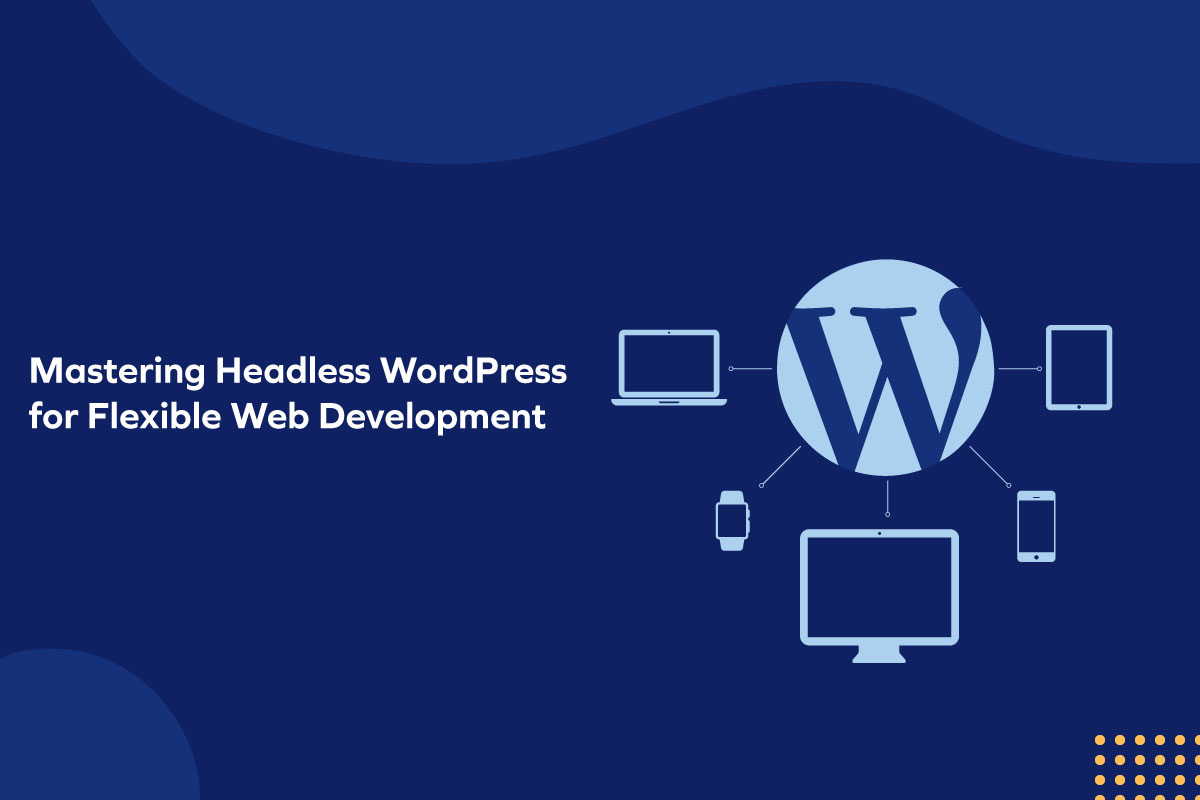What if your WordPress site could escape its traditional shackles, delivering blazing speed and limitless design possibilities? Welcome to the world of headless WordPress—a trend that’s taking the WordPress community by storm and transforming the way we build WordPress websites. In a digital environment where flexibility and performance set the bar, this approach is quickly becoming the future for developers, companies, and WordPress agencies alike.
WordPress, stripped down to just what you need: content management. That’s the root of it. All the posts, pages, and media you add in the backend stay put, but what visitors actually see is driven by a modern solution—React, Vue.js, or Next.js running the show up front. Everything is stitched together by APIs like REST endpoints or GraphQL. No more classic theme bottlenecks. Sites run faster, feel lighter, and support more devices—all while giving you absolute authority over the visual layout. Adoption sits at 15% across advanced adopters this year, with momentum growing. If you value site speed, creative license, and future-proof tech, this is worth a look.
Why Headless WordPress Is Taking Over
Uncoupling front-end from back-end is the big story. In standard WordPress, the CMS does double duty: edits and displays every page. In a headless setup, only the content management stays. You bring in a JavaScript framework that manages the display using API connections. REST endpoints or GraphQL turn WordPress into a content engine. The payoff is flexibility: swap out front-ends, send content to apps, or build for new devices.
All this matters because user expectations have changed. Fast sites are table stakes. Mobile and multi-platform delivery are non-optional. Developers get more room to build what clients want, not just what themes allow. Businesses see the difference too. Benchmarks consistently show headless sites loading two or three times faster than the old stacked approach, per performance benchmarks like Lighthouse scores. With WordPress still in charge of 43% of the internet, this is how you keep it current. No buzz—just what works.
How Headless WordPress Works and Why It Shines
A headless build keeps WordPress at the center for managing your content. PHP themes stay on the bench. APIs manage the data exchange. On the frontend, JavaScript frameworks render whatever you pull in. The tech is proven; the flexibility is tough to match.
Below are a few headless WordPress benefits:
- Speed: Generators for static sites and front-end frameworks sidestep slow server-side rendering. You get instant loads.
- Scalability: Roll out to new sites, devices or apps with a single source of content.
- Design Freedom: Forget theme restrictions—build the UI to your spec.
There are tradeoffs:
- Complexity: Getting started with APIs and learning a modern JS framework takes time. Not plug-and-play.
- Cost: It usually takes longer to build than traditional WordPress, especially the first time.
Media outlets are jumping into headless WordPress to reach readers everywhere at once—site, app, or watch, all managed from one backend. It’s a bit more configuration, but the performance and control are hard to beat—these headless WordPress benefits drive adoption.
How to Set Up Headless WordPress
Here’s a direct set up walk-through, laid out in several steps:
1. Set Up Your WordPress Backend
Use WP Engine, Kinsta, or your preferred WordPress host. Enable the REST API (built-in since 4.7) or use WPGraphQL to allow more adaptable queries. Add a few posts and pages to work with.
2. Pick a Front-End Framework
Pick between React, Vue.js, and Next.js. Many consider Next.js the best front-end for headless WordPress because of its speed and built-in features. React offers a big ecosystem; Next.js flattens the learning curve. Either way, the best front-end for headless WordPress hinges on the exact requirements of your project.
3. Connect the Dots With APIs
During your WordPress API setup, fetch your data using WordPress’s REST interface (/wp-json/wp/v2/posts), or set up WPGraphQL. In Next.js, use getStaticProps to pull data into pages. Postman is handy for sanity checks during setup. Make sure to test your WordPress API setup thoroughly to confirm everything flows smoothly.
4. Build and Deploy
Design your front-end with lightweight CSS—Tailwind works well. Deploy the site on Vercel (great for Next.js) or Netlify (handy for static React). Front-end connects to the WordPress backend with API calls.
5. Optimize and Test
Work in a staging environment to dial in speed. Aim for under two seconds load time. Plug-ins like Yoast SEO (headless-friendly) work fine these days in a headless setup. For more speed, cache API queries with something like Cloudflare.
Budget at least one to two weeks for setup if you’re new to headless. After that, you’ve got a platform that’s fast, flexible, and set up how you want.
Where Headless WordPress Is Headed
Headless WordPress isn’t a short-term solution. As AI tools and smart devices multiply, sites need to send data to more places—voice assistants, IoT, and new apps. Developers are starting to bring in edge computing for even faster load times (think 0.5-second pages by 2026). Gutenberg’s direction is bringing more API-based editing tools, so drag-and-drop for headless might be next up. Decoupled sites will keep getting easier even for non-coders.
Conclusion
Headless WordPress changes what’s possible for website development. It blends WordPress’s strengths with custom front-end tools to get you a site that’s both fast and future-ready. Whether you’re developing your own project, or launching a business online, the steps above will get you moving in the right direction. Try it on your next build. If you end up going headless, share your experience in the comments—the whole WordPress community learns faster together.


